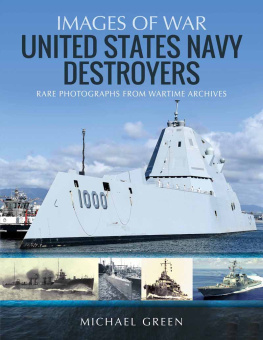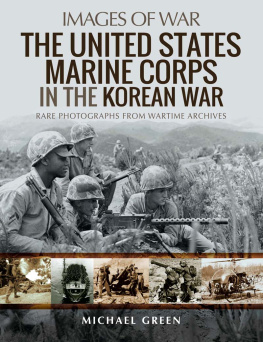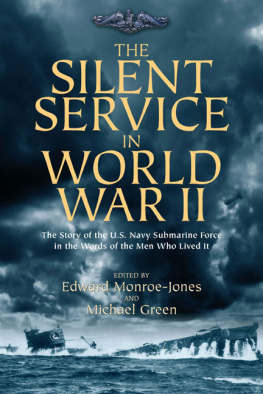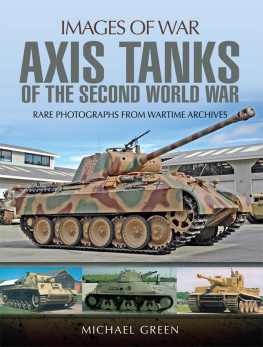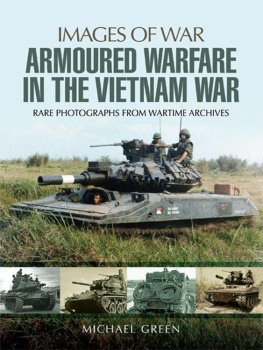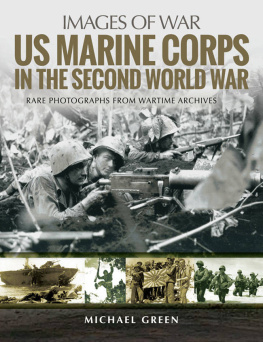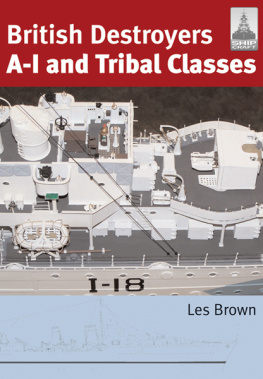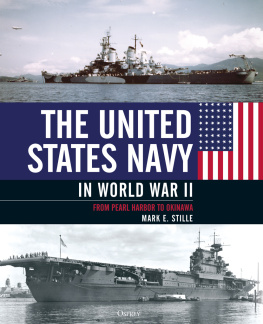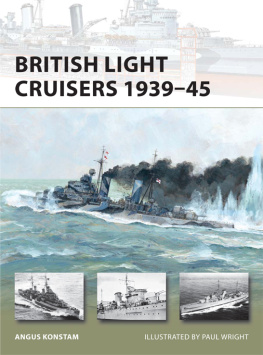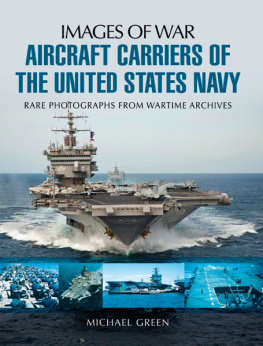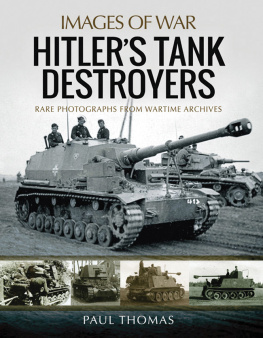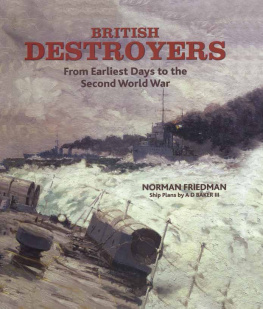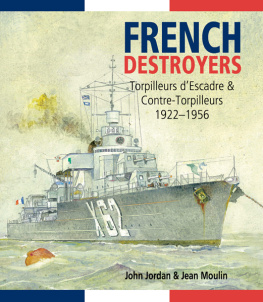Pagebreaks of the print version

IMAGES OF WAR
UNITED STATES NAVY DESTROYERS
RARE PHOTOGRAPHS FROM WARTIME ARCHIVES
Michael Green
First published in Great Britain in 2020 by
PEN & SWORD MARITIME
An imprint of
Pen & Sword Books Ltd
47 Church Street
Barnsley
South Yorkshire
S70 2AS
Copyright f Michael Green, 2020
ISBN 978-1-52675-854-5
eISBN 978-1-52675-855-2
Mob ISBN 978-1-52675-856-9
The right of Michael Green to be identified as author of this work has been asserted by him in accordance with the Copyright, Designs and Patents Act 1988.
A CIP catalogue record for this book is available from the British Library.
All rights reserved. No part of this book may be reproduced or transmitted in any form or by any means, electronic or mechanical including photocopying, recording or by any information storage and retrieval system, without permission from the Publisher in writing.
Pen & Sword Books Limited incorporates the imprints of Atlas, Archaeology, Aviation, Discovery, Family History, Fiction, History, Maritime, Military, Military Classics, Politics, Select, Transport, True Crime, Air World, Frontline Publishing, Leo Cooper, Remember When, Seaforth Publishing, The Praetorian Press, Wharncliffe Local History, Wharncliffe Transport, Wharncliffe True Crime and White Owl.
For a complete list of Pen & Sword titles please contact
PEN & SWORD BOOKS LIMITED
47 Church Street, Barnsley, South Yorkshire S70 2AS, England
E-mail: enquiries@pen-and-sword.co.uk
Website: www.pen-and-sword.co.uk
Dedication
The author dedicates this book to Medal of Honor winner Elmer Charles Bigelow of the US Navy. His citation reads as follows:
For conspicuous gallantry and intrepidity at the risk of his life above and beyond the call of duty while serving on board the USS Fletcher during action against enemy Japanese forces off Corregidor Island in the Philippines, February 14, 1945. Standing topside when an enemy shell struck the Fletcher , Bigelow, acting instantly as the deadly projectile exploded into fragments which penetrated the No. 1 gun magazine and set fire to several powder cases, picked up a pair of fire extinguishers and rushed below in a resolute attempt to quell the raging flames. Refusing to waste the precious time required to don rescue-breathing apparatus, he plunged through the blinding smoke billowing out of the magazine hatch and dropped into the blazing compartment. Despite the acrid, burning powder smoke which seared his lungs with every agonizing breath, he worked rapidly and with instinctive sureness and succeeded in quickly extinguishing the fires and in cooling the cases and bulkheads, thereby preventing further damage to the stricken ship. Although he succumbed to his injuries on the following day, BIGELOW, by his dauntless valor, unfaltering skill and prompt action in the critical emergency, had averted a magazine explosion which undoubtedly would have left his ship wallowing at the mercy of the furiously pounding Japanese guns on Corregidor, and his heroic spirit of self-sacrifice in the face of almost certain death enhanced and sustained the highest traditions of the United States Naval Service. He gallantly gave his life in the service of his country.
Introduction
I n May 1898, the American Congress authorized the construction of sixteen destroyers. Before Americas official entry into the First World War, the US Navy procured sixty-three destroyers divided into nine different classes. The last five classes were collectively referred to as broken-deckers due to their high forecastle or thousand-tonners due to their displacement.
Keenly aware of the threat posed by the German U-boats in the First World War, the American Congress authorized 267 destroyers. Only forty-one entered service before that conflict concluded. The remainder were completed by 1922. Due to the majority having four smoke stacks, they received the nickname four-stackers or four-pipers.
Beginning in 1932, up until the Japanese attack on Pearl Harbor, the US Navy placed into service ten new classes of destroyers totalling 169 units. During the war years, American shipyards built 334 destroyers, divided into three classes. The most numerous were the 175 examples of the Fletcher class: the most successful destroyer design of the Second World War.
During the Cold War, the threat from the Soviet Navys submarine fleet pushed the development of seven new destroyer designs into service between 1949 and 1988, beginning with the Mitscher class and eventually into the stealth-shaped Arleigh Burke class of which eighty-two units are planned. The intended replacement for the Arleigh Burke class by 2020 was to be the first of thirty-two examples of the futuristiclooking Zumwalt class. However, cost overrides led to the classs cancellation in 2009 with only three to be built.
Acknowledgements
T he historical images in this work come from the files of the US Navy Historical Center. The contemporary photographs come from a US Navy website. Some pictures came from friends that are named. As with all published works, authors depend on friends for assistance in reviewing their work.
Notes to the Reader
This book is not a comprehensive history of US Navy destroyers, but rather a broad overview of the subject.
All standard ship displacements are in long tons (2,240lb to the ton).
Stated displacements only represent a point in time of a destroyers service with the US Navy due to ongoing alterations and upgrades.
Chapter One
Early Development
A technology breakthrough occurred in 1866 with British inventor Robert White-heads invention of the worlds first self-propelled torpedo. A severe threat to battleships, then the dominant vessel in the worlds navies and the symbol of maritime power, torpedoes were viewed as a real game-changer in naval warfare.
Navies around the world quickly began designing and building small, short-ranged, torpedo-armed surface vessels to challenge any hostile fleets approaching their shores. These new naval vessels unsurprisingly became known as torpedo boats. Submarines, too, became torpedo-launching platforms.
US Navy Torpedo Boats
In 1886, the American Congress authorized construction of a first-class torpedo boat. It entered service in 1890 as the USS Cushing , or Torpedo Boat No. 1 (TB-1). Its three onboard torpedoes had a maximum range of about 1,767 yards. Cushing s only other armament consisted of three small-calibre deck guns.
The USS Cushing had a crew of twenty-two men and was 140ft long with a maximum beam of 15ft 1in. The vessels displacement came in at 105 tons. Coal-fired boilers provided steam to two direct-drive, triple-expansion, reciprocating steampowered engines. The ship had a top speed of 23 knots, making it fast enough to chase down and engage slower warships such as battleships.
Of the thirty-five torpedo boats that the US Navy eventually took into service, twenty survived long enough to see service during the First World War (191418). All except one example were decommissioned and sold for scrap in 1919. The US Navy decommissioned its last torpedo boat in 1925 and then sold it for scrap, the typical end for most warships.
Displacement
The US Navy definition of displacement is the weight of the water displaced by a warship. Displacement is a constant for a given water density because the volume (subject to temperature and pressure) is a constant. The listed weights of each destroyer class described in this book fall under the heading of standard displacement. It describes a fully-manned and armed warship, but does not include fuel and feedwater.

